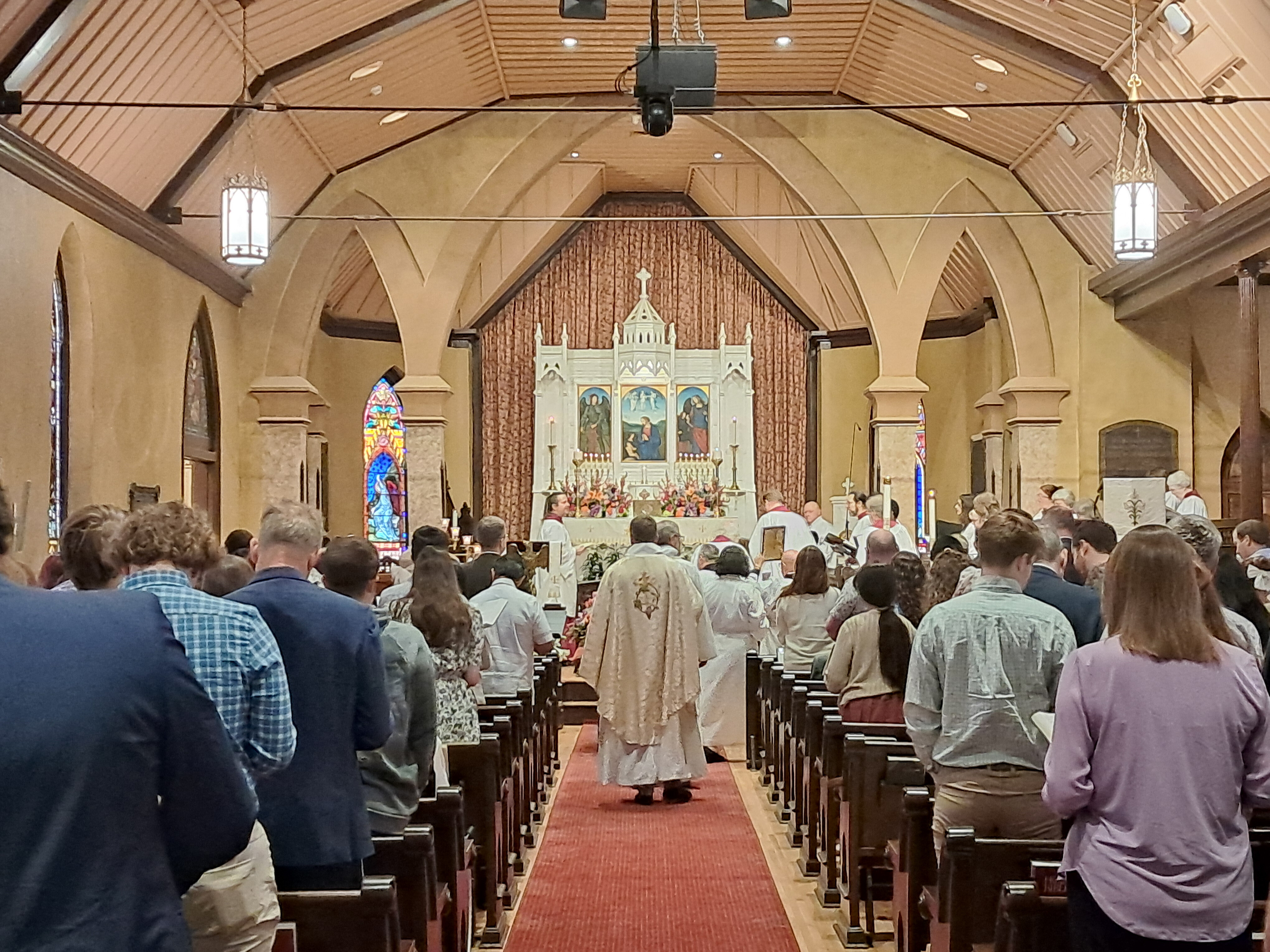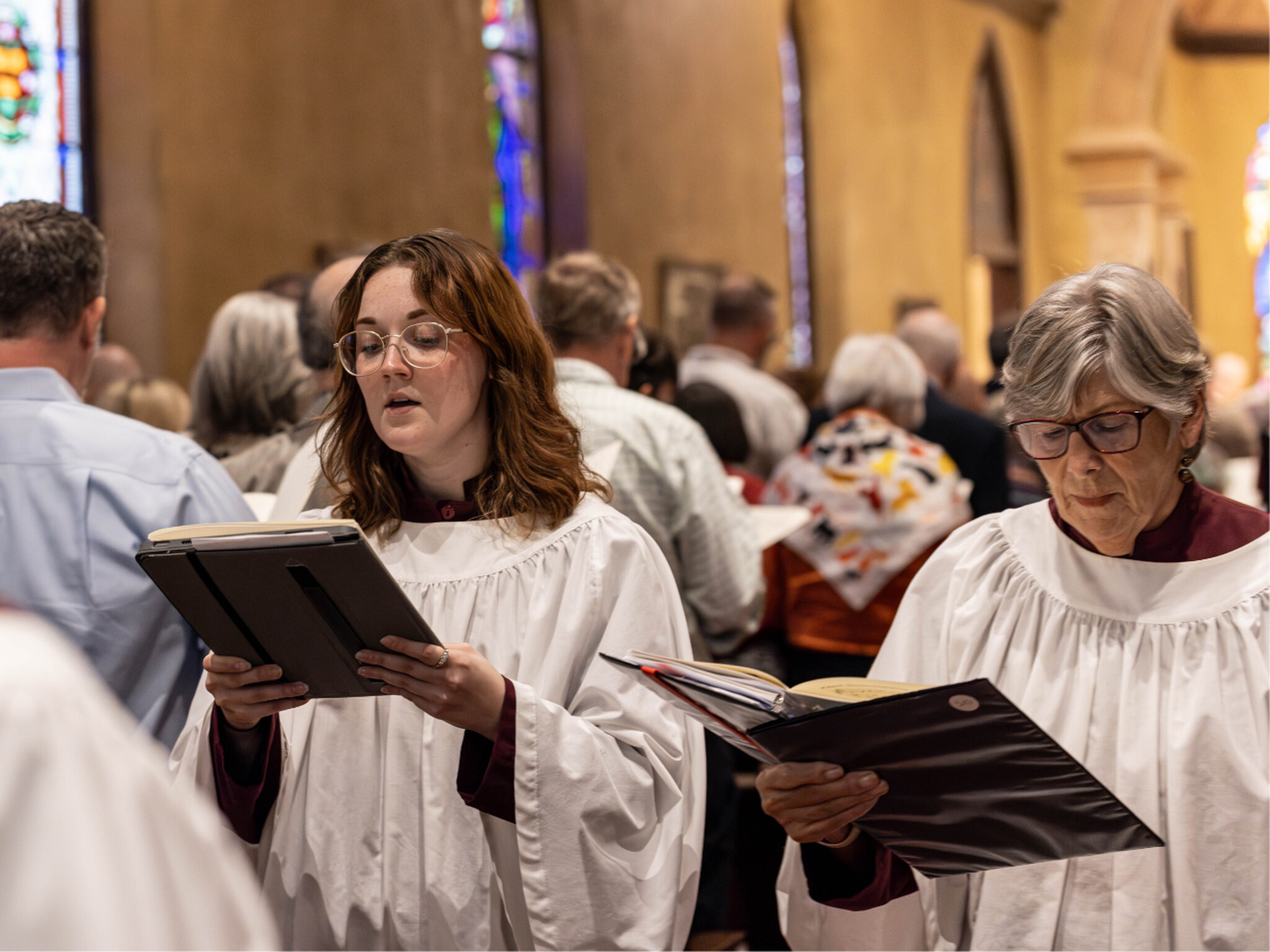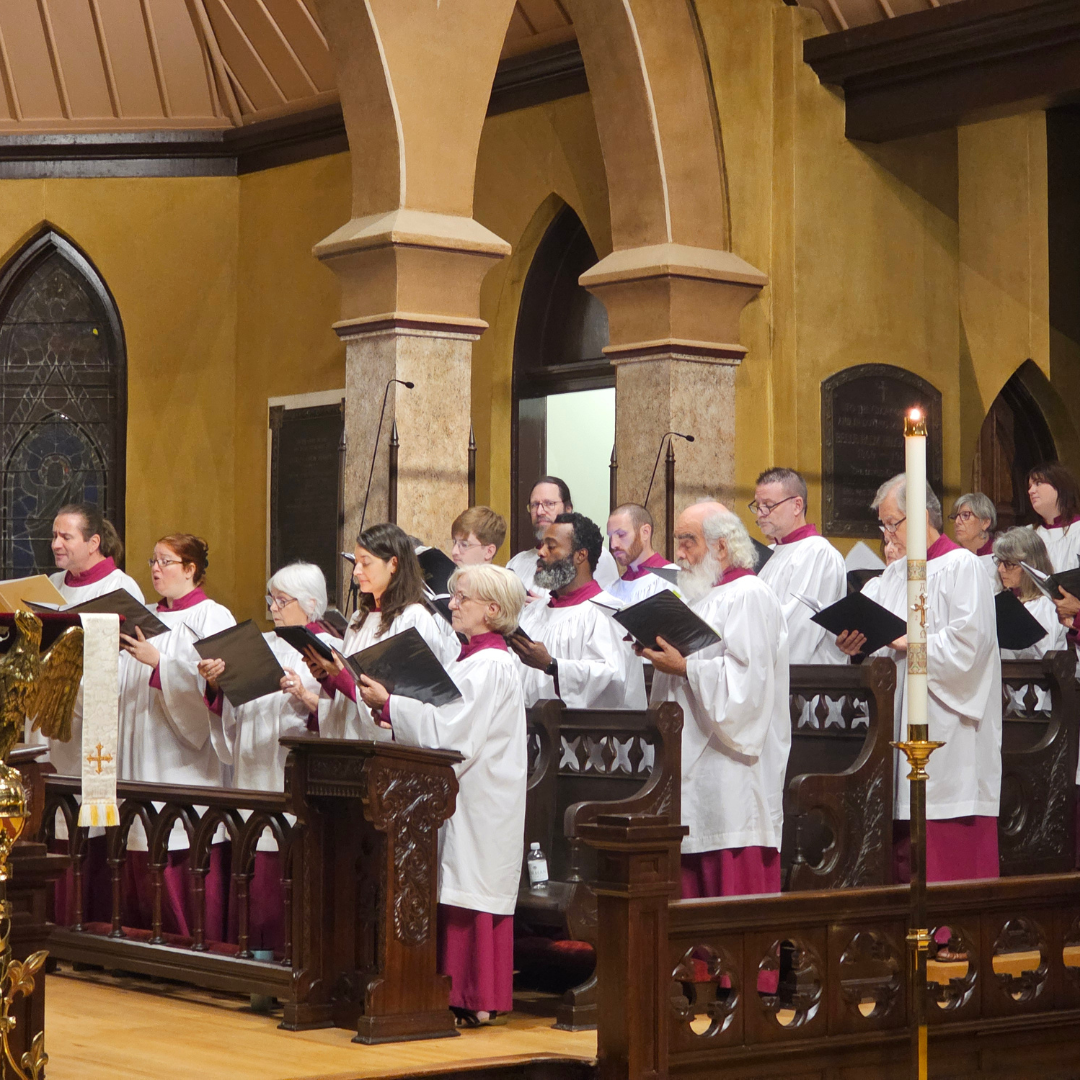
The Gospel on the Second Sunday of Easter always focuses on St Thomas, whose experience of doubt, then belief, in the Risen Christ is the basis of two hymns and an anthem this week.
‘O filii et filiae’ (‘O sons and daughters’), a narrative Easter carol, dates from late fifteenth- or early sixteenth-century France, where it achieved great popularity. Two portions of the original nine-stanza text are found in our Hymnal, one with selected stanzas particularly appropriate for Easter Day [203] and the other with stanzas for the Second Sunday of Easter [206], with two different rhythmic interpretations of the tune. The Communion anthem, by late-Renaissance composer Hans Leo Hassler, is a setting of part of the Gospel: ‘Because you have seen me, Thomas, you have believed; blessed are they who have believed, and have not seen.’
‘We walk by faith, and not by sight’ [209] deals with the distance we can sometimes feel, two thousand years later, from the bodily appearances of the risen Christ. The first two stanzas contrast the experience of the first disciples with our own: ‘We walk by faith, and not by sight’ (II Cor. 7); we do not hear directly the words of the one who spoke like no other (as Our Lord’s old acquaintances said of him when he visited his hometown) – but we nonetheless believe in his presence. We cannot touch his wounds – but like Thomas we recognize and acclaim him Lord and God, with the implied prayer that we may be among those who are ‘blessed...who have not seen, and yet have come to believe’. The last two stanzas, which form one continuous thought, then ask for faith in the midst of doubt (like the father of the boy who suffered seizures, Mark 9.24) to seek the Lord (Isaiah 55.6), so that at the last we may see him as he is (I John 3.2). The text was written by Henry Alford, a 19th-century Church of England priest who was a brilliant scholar as well as an artist, musician, and poet; he is also the author of ‘Come, ye thankful people, come’ (290).
Hymn 193, ‘That Easter Day with joy was bright’, is a translation of parts of two Eastertide Office hymns: stanzas 1–3 taken from ‘Claro paschali gaudio’, the last section of a morning hymn, ‘Aurora lucis rutilat’, and 4–5 from ‘Ad cenam agni providi’ [Hymns 174 and 202, which see]. The present text usefully connects the events of Easter Day with the rest of the Easter Season. It is set to a carol tune, ‘Puer nobis’, known to be as old as the fifteenth century; like ‘O filii’, it appears in two different versions in our Hymnal, the triple-meter, iambic one at 193, and a duple-meter, trochaic one at 98.
The Introit antiphon for the Second Sunday of Easter –
As with infants newly born [,] spiritual and uncorrupted [,] milk should be your desire
– culminates a week-long series of chants addressed to those who were baptized and made their first communion (the completion of their baptism) at the Easter Vigil, and who anciently underwent instruction in Easter Week to explain the sacraments they had experienced. In those same early days of the Church, the neophytes, in addition to receiving the Body and Blood, were administered milk and honey (referred to in more than one chant during Easter Week; hence also our parish’s ‘feast of milk and honey’ after the Easter Vigil), which are symbolic of new birth, nourishment, sweetness, and abundance. The antiphon is paired with verses from Psalm 81: ‘open your mouth wide and I will fill it’ (one is reminded of communicants receiving the Host on the tongue, like baby birds being fed by their Mother, the Church); ‘Israel would I feed with the finest wheat / and satisfy him with honey from the rock.’
The bracketed commas in the foregoing translation of the antiphon reflect various possible interpretations of the Latin text and its Greek original (I Peter 2.2; the English translations in use also reflect some of the difficulty): in the Greek, the words here translated ‘spiritual’ and ‘uncorrupted’ modify ‘milk’, but the Latin translations vary; the Latin phrase literally meaning ‘without deceit or fraud’ could apply to either the infants, the milk, or the desiring, while the word translated ‘spiritual’, which really refers to what we rather vaguely call our ‘higher nature’, in some sources modifies ‘milk’ and in others, ‘infants’. Read with the first comma, the Introit reads as the Greek does: ‘like newborn infants, crave the milk of [i.e., that nourishes one for] full, mature humanity in the likeness of God’ (which milk is, by implication from the scriptural context, the word and Word of God, and from the liturgical context, is the Eucharist). Read with the second comma, we may arrive at what the Latin is trying to get at – and in a way, at what the Greek ultimately means: that the infants in question (i.e., the neophytes) are newly born [as] pure and [only now] beings truly capable of higher nature, of ‘growing to salvation’ as the next verse (I Peter 2.3) says, or coming ‘to maturity, to the measure of the full stature of Christ’ (Ephesians 4.13). Like them, we all of us should continually crave the Word and Sacrament which nourish us to grow in the likeness of God.





Login To Leave Comment